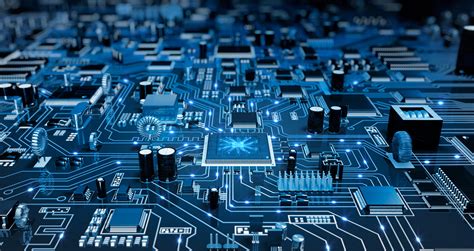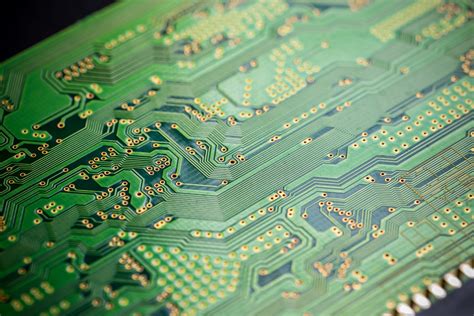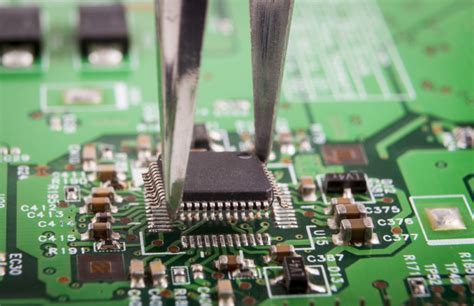Introduction to PCB Assembly
Printed Circuit Board (PCB) assembly is the process of soldering electronic components onto a PCB to create a functional electronic device. PCB assembly is a crucial step in the manufacturing process of electronic devices, as it determines the reliability, performance, and overall quality of the final product.
In this article, we will explore the different types of PCB assembly services available and provide tips to ensure your PCB assembly project is a success.
Types of PCB Assembly Services
There are several types of PCB assembly services available, each with its own advantages and disadvantages. Here are the most common types of PCB assembly services:
1. Through-Hole Assembly (THA)
Through-hole assembly is the traditional method of PCB assembly, where components are inserted into drilled holes on the PCB and soldered onto the other side. This method is reliable and sturdy but is slower and more labor-intensive than other methods.
2. Surface Mount Technology (SMT) Assembly
Surface mount technology (SMT) assembly is a more modern method of PCB assembly, where components are placed directly onto the surface of the PCB and soldered using a reflow oven. SMT assembly is faster, more efficient, and allows for smaller components and higher component density than through-hole assembly.
3. Mixed Technology Assembly
Mixed technology assembly combines both through-hole and SMT assembly methods on a single PCB. This method is used when a PCB requires both types of components, such as connectors or large components that cannot be surface mounted.
4. Flex Circuit Assembly
Flex circuit assembly involves assembling components onto a flexible PCB made of materials such as polyimide or polyester. Flex Circuits are used in applications where the PCB needs to bend or flex, such as in wearable devices or aerospace applications.
5. Rigid-Flex Assembly
Rigid-flex assembly combines both rigid and flexible PCBs into a single assembly. This method is used when a device requires both the stability of a rigid PCB and the flexibility of a flex circuit, such as in medical devices or automotive applications.

Factors to Consider When Choosing a PCB Assembly Service
When choosing a PCB assembly service, there are several factors to consider to ensure the success of your project. Here are some of the most important factors:
1. Experience and Expertise
Choose a PCB assembly service provider with experience and expertise in the type of assembly your project requires. Look for providers with a proven track record of delivering high-quality PCB assemblies on time and within budget.
2. Quality Control Processes
Ensure that the PCB assembly service provider has robust quality control processes in place to ensure the reliability and performance of your PCB assembly. Look for providers with certifications such as ISO 9001 or IPC-A-610.
3. Technology and Equipment
Choose a PCB assembly service provider with state-of-the-art technology and equipment to ensure the highest quality and efficiency of your PCB assembly. Look for providers with automated assembly lines, 3D solder paste inspection, and automated optical inspection (AOI) systems.
4. Turnaround Time
Consider the turnaround time of the PCB assembly service provider to ensure that your project is completed within your desired timeline. Look for providers with quick turnaround times and the ability to handle rush orders if necessary.
5. Cost
Consider the cost of the PCB assembly service, including any additional fees for rush orders or special requirements. Look for providers with competitive pricing and transparent billing practices.

Tips for a Successful PCB Assembly Project
Here are some tips to ensure the success of your PCB assembly project:
1. Design for Manufacturability (DFM)
Design your PCB with manufacturability in mind to ensure that it can be easily assembled and tested. Follow best practices for component placement, routing, and Signal integrity to minimize the risk of assembly errors or performance issues.
2. Use High-Quality Components
Use high-quality components from reputable suppliers to ensure the reliability and performance of your PCB assembly. Avoid using counterfeit or substandard components, which can lead to assembly failures or reduced product lifespan.
3. Communicate Clearly with Your Assembly Provider
Communicate clearly with your PCB assembly service provider throughout the project to ensure that your requirements and expectations are met. Provide detailed documentation, including Bill of Materials (BOM), Gerber files, and assembly drawings, to minimize the risk of errors or delays.
4. Test and Inspect Your PCB Assembly
Test and inspect your PCB assembly thoroughly before finalizing the design to identify any issues or defects. Use automated testing equipment and visual inspection to ensure that your PCB assembly meets your quality standards and performance requirements.
5. Plan for Scalability
Plan for scalability when designing your PCB assembly to ensure that it can be easily scaled up for mass production. Consider factors such as component availability, assembly process efficiency, and supply chain management to minimize the risk of production delays or quality issues.

FAQs
1. What is the difference between through-hole and surface mount assembly?
Through-hole assembly involves inserting components into drilled holes on the PCB and soldering them onto the other side, while surface mount assembly involves placing components directly onto the surface of the PCB and soldering them using a reflow oven. Surface mount assembly is faster, more efficient, and allows for smaller components and higher component density than through-hole assembly.
2. What is the typical turnaround time for a PCB assembly project?
The typical turnaround time for a PCB assembly project varies depending on the complexity of the project, the type of assembly required, and the workload of the assembly provider. Standard turnaround times can range from a few days to several weeks, while rush orders may be available for an additional fee.
3. How can I ensure the quality of my PCB assembly?
To ensure the quality of your PCB assembly, choose a reputable PCB assembly service provider with experience and expertise in the type of assembly your project requires. Look for providers with robust quality control processes, state-of-the-art technology and equipment, and certifications such as ISO 9001 or IPC-A-610. Use high-quality components from reputable suppliers, communicate clearly with your assembly provider, and thoroughly test and inspect your PCB assembly before finalizing the design.
4. What is the difference between flex circuit and rigid-flex assembly?
Flex circuit assembly involves assembling components onto a flexible PCB made of materials such as polyimide or polyester, while rigid-flex assembly combines both rigid and flexible PCBs into a single assembly. Flex circuits are used in applications where the PCB needs to bend or flex, while rigid-flex assemblies are used when a device requires both the stability of a rigid PCB and the flexibility of a flex circuit.
5. How can I minimize the cost of my PCB assembly project?
To minimize the cost of your PCB assembly project, consider factors such as the type of assembly required, the complexity of the design, and the volume of production. Choose a PCB assembly service provider with competitive pricing and transparent billing practices, and consider designing your PCB with manufacturability in mind to minimize the risk of assembly errors or delays. Use high-quality components from reputable suppliers to avoid the cost of rework or repairs due to component failures.
Conclusion
PCB assembly is a critical step in the manufacturing process of electronic devices, and choosing the right PCB assembly service provider is essential for the success of your project. Consider factors such as experience and expertise, quality control processes, technology and equipment, turnaround time, and cost when selecting a provider, and follow best practices for design, component selection, communication, testing, and scalability to ensure the highest quality and reliability of your PCB assembly.
By understanding the different types of PCB assembly services available and following these tips, you can ensure that your PCB assembly project is a success and that your electronic device meets your performance and quality requirements.
| Type of PCB Assembly | Advantages | Disadvantages |
|---|---|---|
| Through-Hole Assembly (THA) | Reliable and sturdy | Slower and more labor-intensive |
| Surface Mount Technology (SMT) Assembly | Faster, more efficient, allows for smaller components and higher component density | Requires specialized equipment and expertise |
| Mixed Technology Assembly | Combines both through-hole and SMT assembly methods on a single PCB | More complex and may require additional design considerations |
| Flex Circuit Assembly | Allows for flexibility and bending of the PCB | May require specialized materials and manufacturing processes |
| Rigid-Flex Assembly | Combines both rigid and flexible PCBs into a single assembly | More complex and may require additional design considerations |

No responses yet